1900 – 1901
Architect: Peter Behrens
Alexandraweg 19, Darmstadt, Germany
For the first exhibition of the artists’ colony at Mathildenhöhe in 1901, Peter Behrens designed his own house and interior.
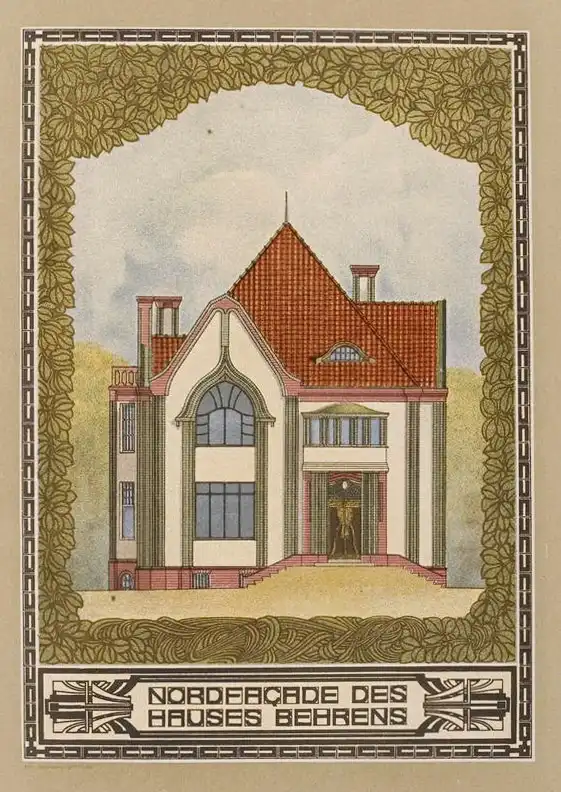
Haus Behrens, 1900-1901. Architect: Peter Behrens
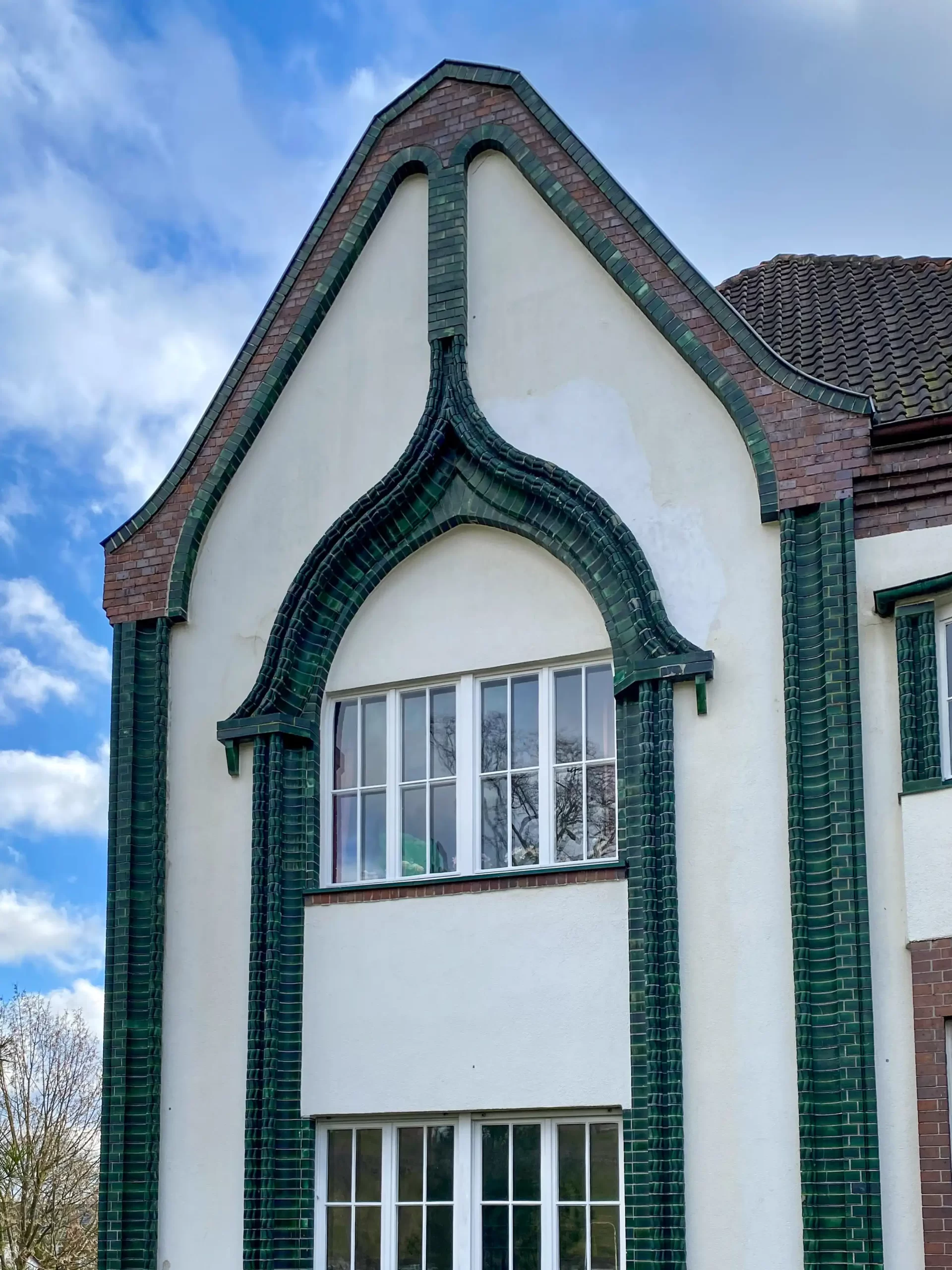
Haus Behrens, 1900-1901. Architect: Peter Behrens. Photo: Daniela Christmann
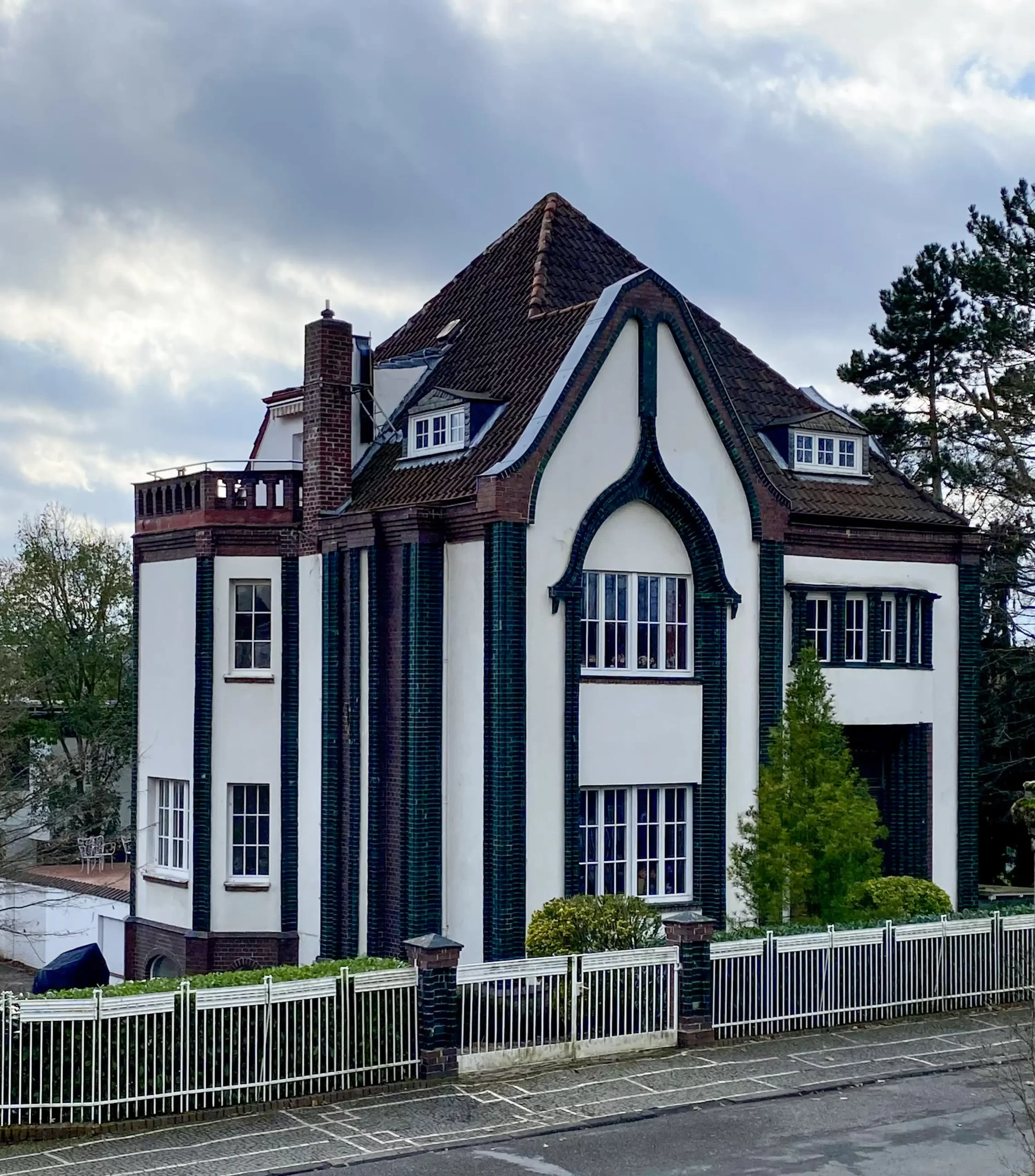
Haus Behrens, 1900-1901. Architect: Peter Behrens. Photo: Daniela Christmann
Peter Behrens
Peter Behrens was an artist and graphic designer, a typeface designer, a product and furniture designer, and finally an architect. He made a name for himself with industrial buildings such as the turbine hall for AEG in Berlin.
In 1905, he was commissioned by the Düsseldorf Ministry of Trade and Industry to set up “writing courses for trade teachers”. These were led by the Mönchengladbach calligrapher and typographer Anna Simons.
As part of this activity, Behrens designed the lettering “Dem deutschen Volke” for the Reichstag building in Berlin in 1908.
He became known as a co-founder of the Deutscher Werkbund and for his design work for AEG before World War I. As an industrial designer, he invented corporate design by creating a uniform look for everything at AEG, from letterheads to manufactured products such as electric kettles and factory buildings.
The architectural firm he headed became especially important, with Walter Gropius, Ludwig Mies van der Rohe, and Le Corbusier among those working almost simultaneously.
As a typeface designer, he worked for the Klingspor brothers’ type foundry. He designed a number of typefaces there, including Behrens Antiqua in 1907.
Mathildenhöhe Artists’ Colony
In 1899, Behrens was appointed to the Mathildenhöhe artists’ colony in Darmstadt.
The initiative for such an artists’ colony came from the Grand Duke of Hesse, Ernst Ludwig, who invited young artists of various disciplines to Darmstadt. When the artists’ colony presented itself to the public in 1901 with the exhibition “A Document of German Art“, Behrens’ house, which he had designed himself from the façade to the cutlery, was particularly impressive.
Some experts, however, were offended by the fact that Behrens was a self-taught architect.
To the surprise of his critics, however, he solved his first building and interior design task to a high standard and proved that he was capable of working comprehensively in all areas of interior and exterior architecture, despite the sneers of reactionary academics about the so-called ‘painter-architects’.
In Wilhelmine Germany after 1900, there were a number of “painter-architects,” trained artists who were self-taught designers and architects, including Bruno Paul, Richard Riemerschmid, and above all Henry van de Velde and Peter Behrens.
They ventured into the world of building through applied art design, each creating their own modernist language that united them in their efforts to overcome the formal framework of historicism.
Behrens House
The three-story, almost square-plan villa on Darmstadt’s Mathildenhöhe was by no means a first.
The originally light gray plastered façade is accentuated by green glazed facing bricks and blue-red iron clinker bricks.
The light plaster surfaces and the high curved pediments in the north and west reinforce the independent effect of the architectural ceramics.
The entrance portal, with a stepped clinker frame, faces the street. The ornamentation with stylized eagle wings refers to the philosophy of Friedrich Nietzsche.
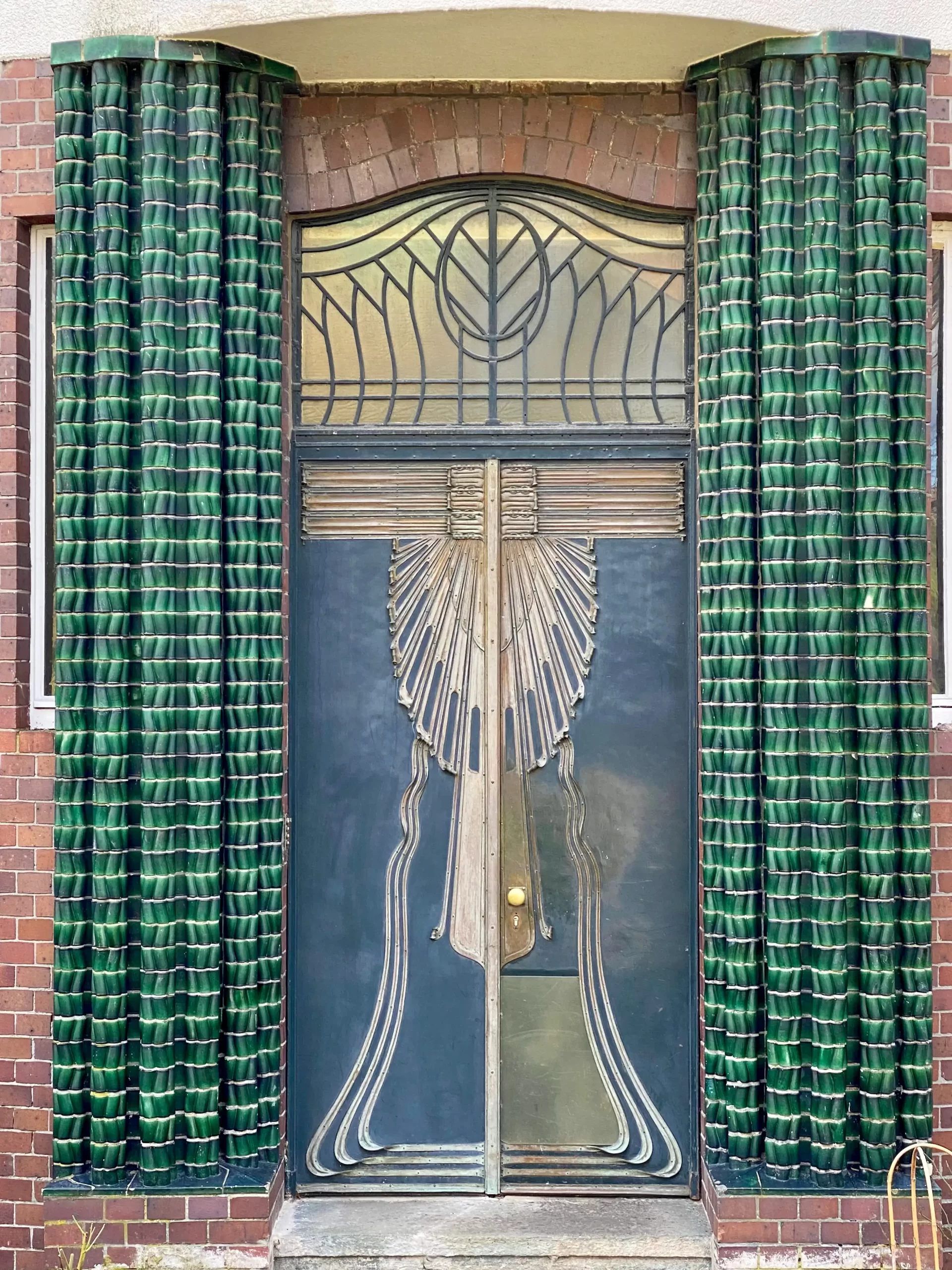
Haus Behrens, 1900-1901. Architect: Peter Behrens. Photo: Daniela Christmann
Above the lintel to the west, the inscription ‘Steh’ fest mein Haus im Weltgebraus’ (Stand firm my house in the world’s turmoil) underscores the character of the artist’s villa.
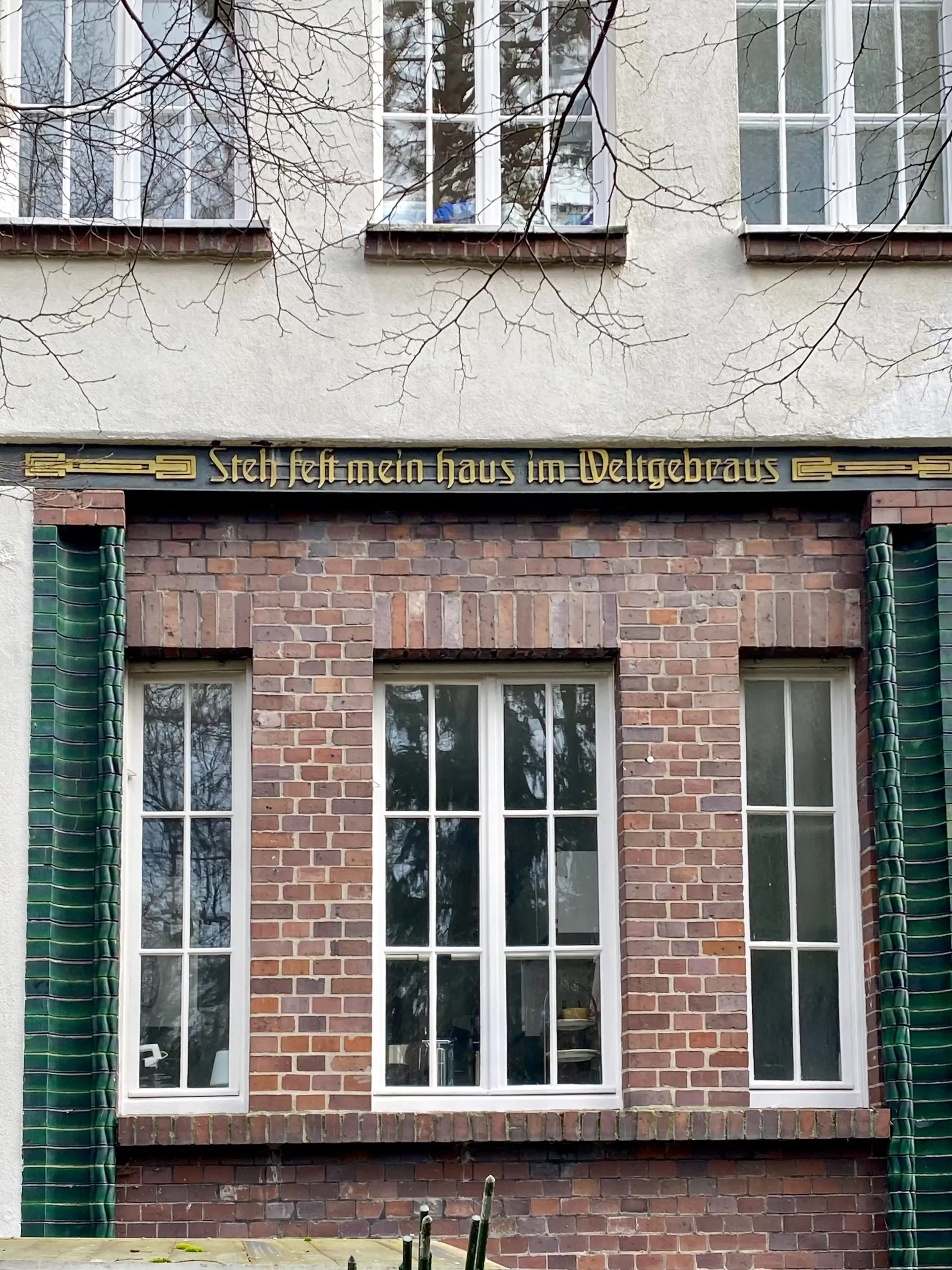
Haus Behrens, 1900-1901. Architect: Peter Behrens. Photo: Daniela Christmann
The view from the street shows the floor plan from the outside: To the left of the entrance is the music room, behind which is the dining room, and to the right is the ladies’ room.
Above the entrance on the second floor is the library, to the left is a high, bright studio for the master of the house, and behind it are the bedroom, bathroom and toilet.
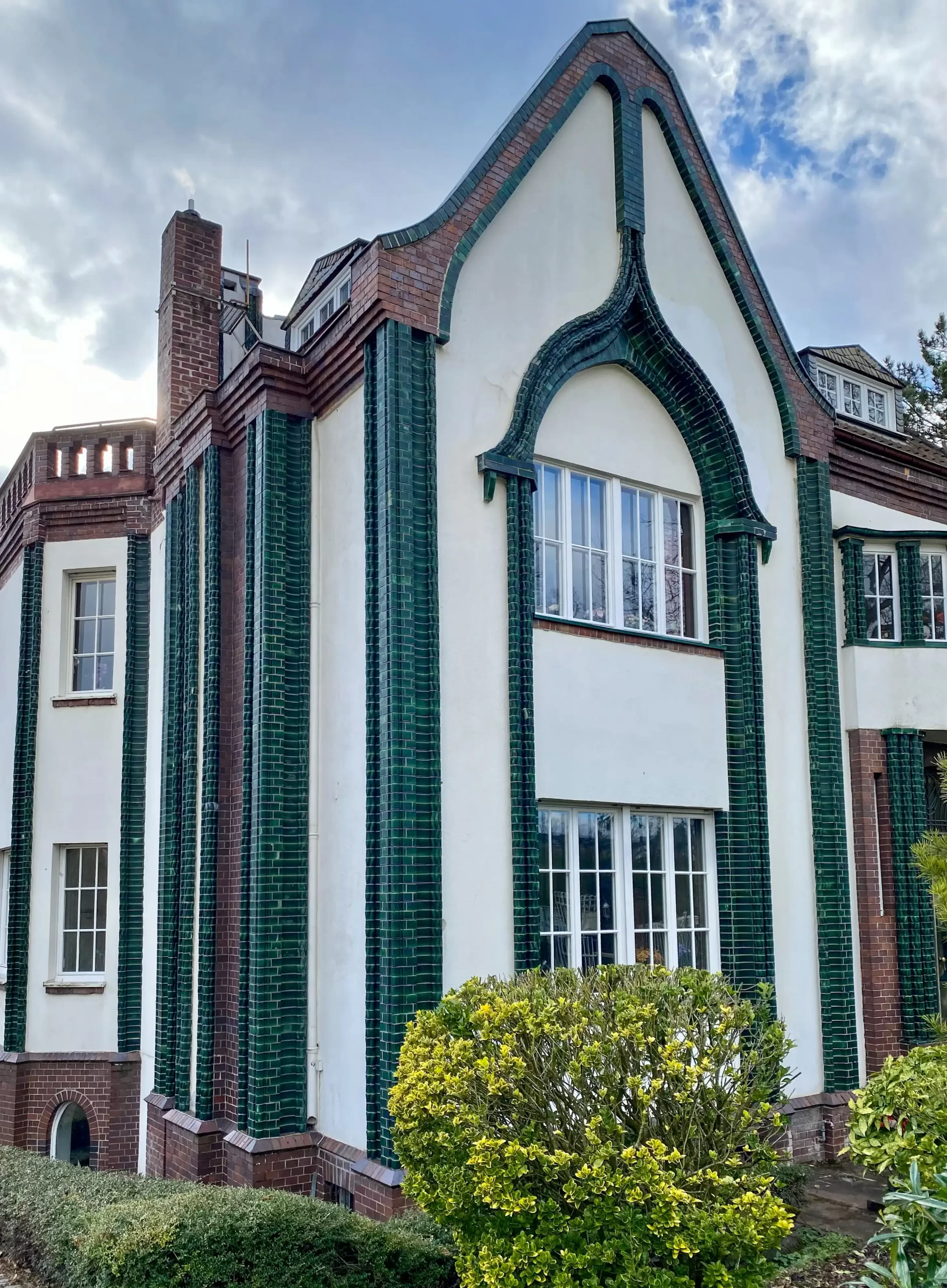
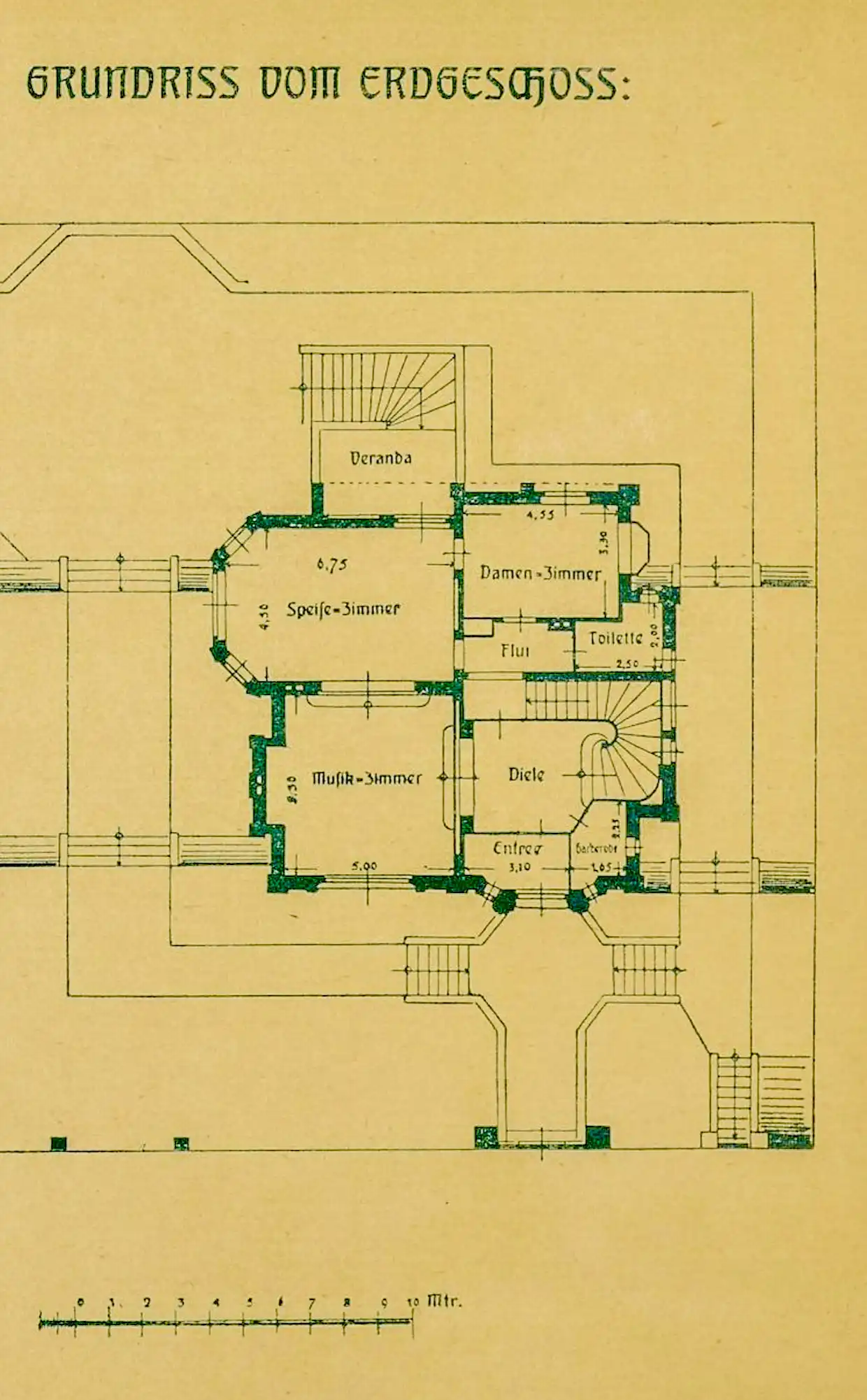
Haus Behrens, 1900-1901. Architect: Peter Behrens
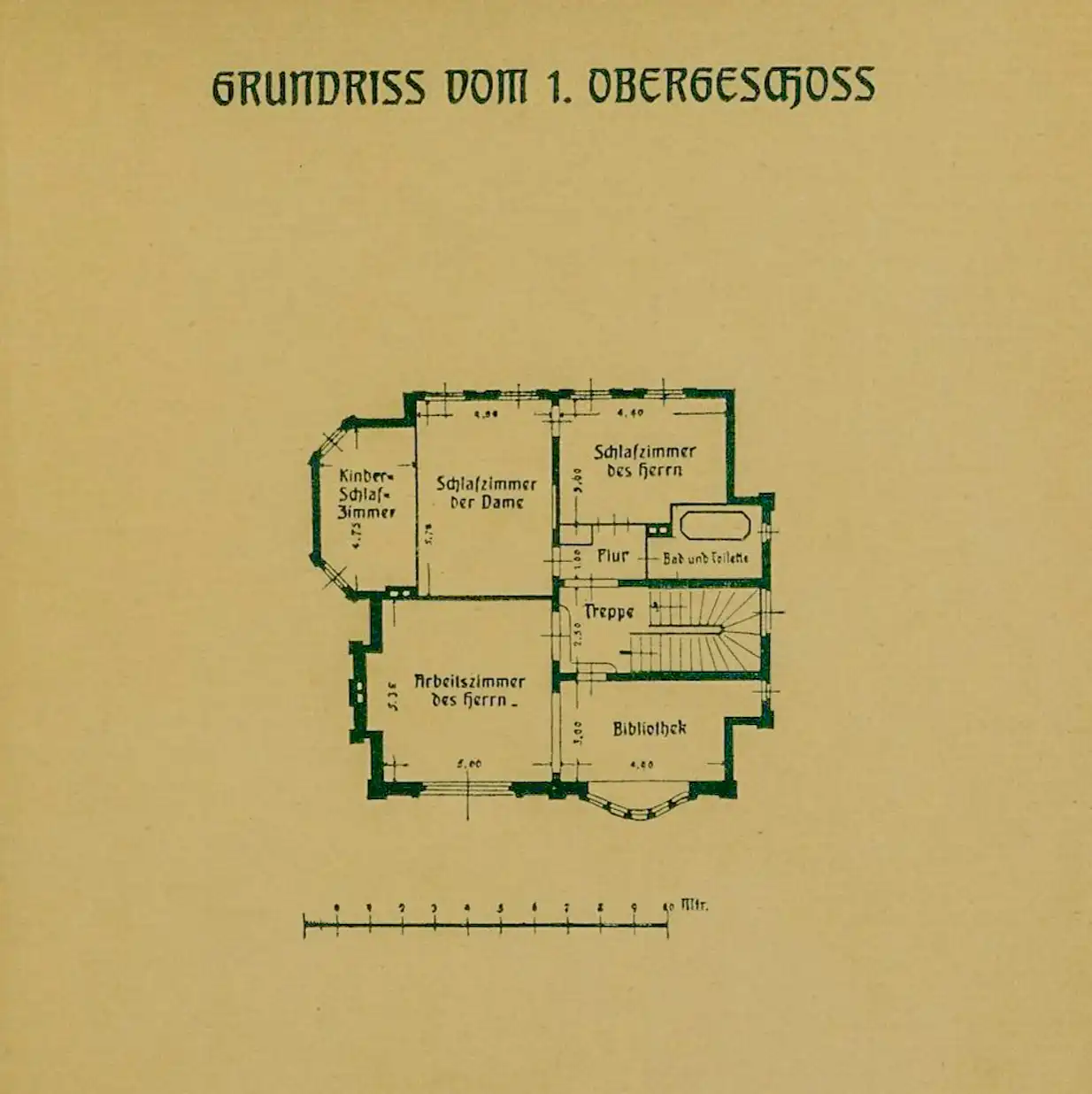
Haus Behrens, 1900-1901. Architect: Peter Behrens
Interiors
The dining room opened onto a terrace from which a staircase led to the south-facing hillside. Adjacent to the house, Behrens planned the garden as an extension of his architecture.
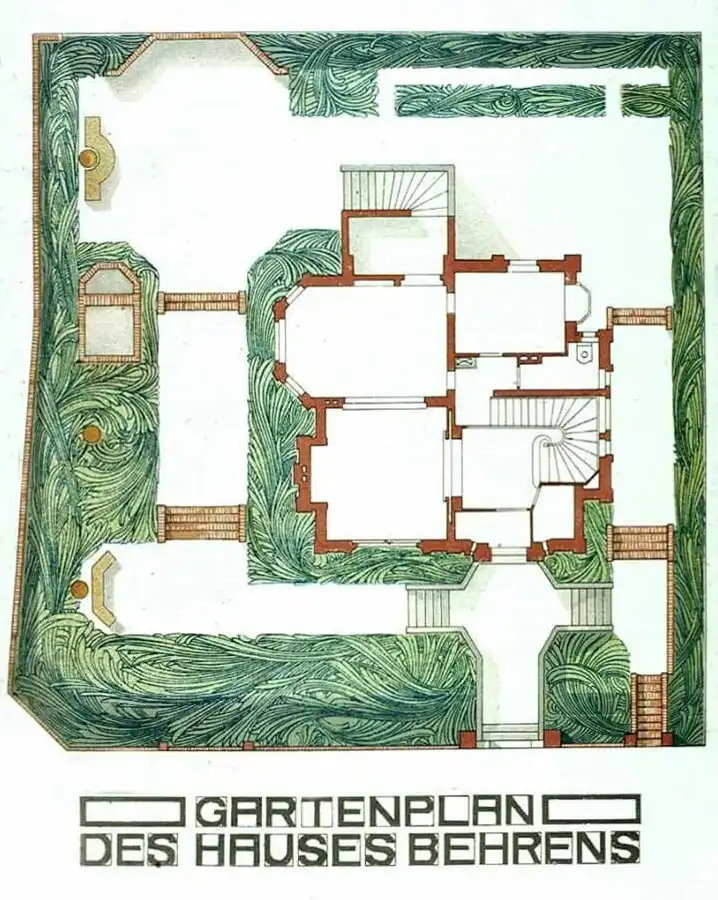
Haus Behrens, 1900-1901. Architect: Peter Behrens
Spaces for common use, such as the library and study, or the dining and music rooms, are arranged side by side. Special attention was given to the retreat rooms in the house.
Peter Behrens planned the interiors down to the last detail. For each room, Behrens chose a specific basic geometric shape from which he developed the corresponding decorative motifs.
He designed the music room to be particularly impressive, with dark stained furniture and an effective, almost sacred setting.
In contrast, the adjoining dining room was light and friendly. Part of this interior design can be seen today in the Artists’ Colony Museum.
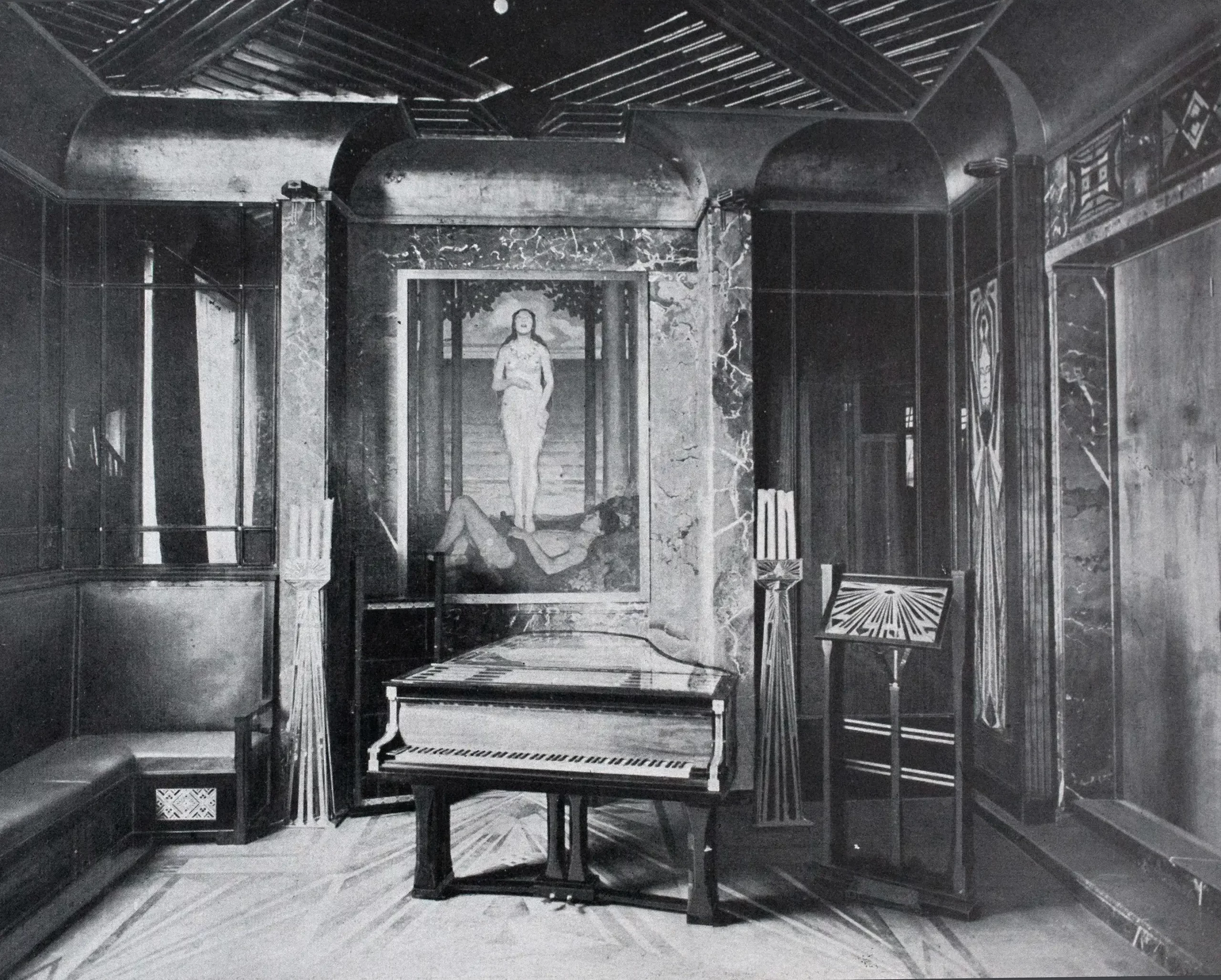
Haus Behrens, 1900-1901. Architect: Peter Behrens
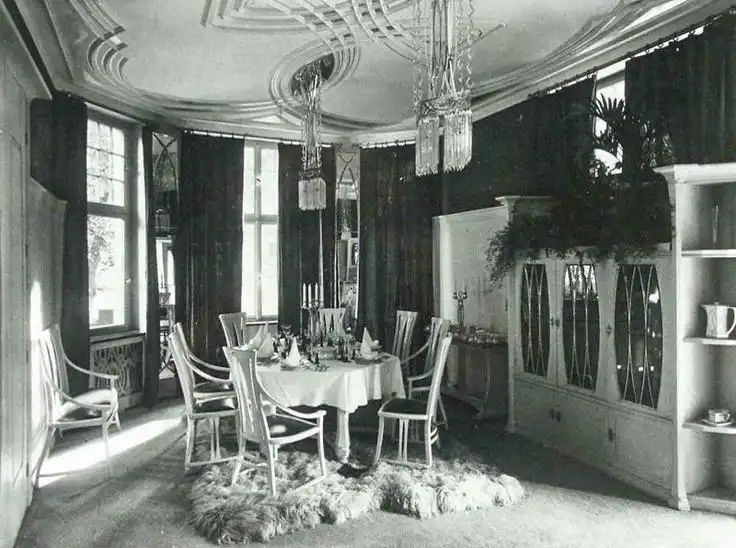
Haus Behrens, 1900-1901. Architect: Peter Behrens
Ein Dokument deutscher Kunst (A Document of German Art) 1901
The art historian Julius Meier-Graefe, who ran the Galerie La Maison Moderne in Paris, was present at the opening of the exhibition ‘Ein Dokument deutscher Kunst’ (A Document of German Art) in 1901, where Behrens presented his house. In his eyes, Behrens’ house alone was perfect and made the long journey worthwhile.
After the exhibition, disagreements arose between the artists and the city authorities. Disappointed, Behrens turned his back on Darmstadt in 1902 and became director of the Düsseldorf School of Arts and Crafts.
Behrens never lived in the villa himself, but sold it shortly after its completion.
UNESCO World Heritage Site
The Darmstadt artists’ colony was a forerunner of all the model house exhibitions organized by the Werkbund in the 1920s, which helped to shape and visualize modernism.
Mathildenhöhe was not only a unique event that brought together artistic reform ideas and reform efforts, it was also a very specific architectural exhibition,
which – time and again – devoted itself to relevant, current architectural tasks.
It was primarily about the house, first the artists’ house, then the town house in 1904, the workers’ house in 1908, and the tenement house in 1914.
The upheavals of the time were characterized by the tasks and themes of architecture, which had to be adapted to a new reality.
The house was the new architectural theme and played a key role in the design of a new modern architecture.
The Behrens House was damaged and burned out in 1944, but the exterior walls with their clinker pilasters and green architectural ceramics were preserved.
Today, the Behrens House is part of the UNESCO World Heritage Mathildenhöhe.

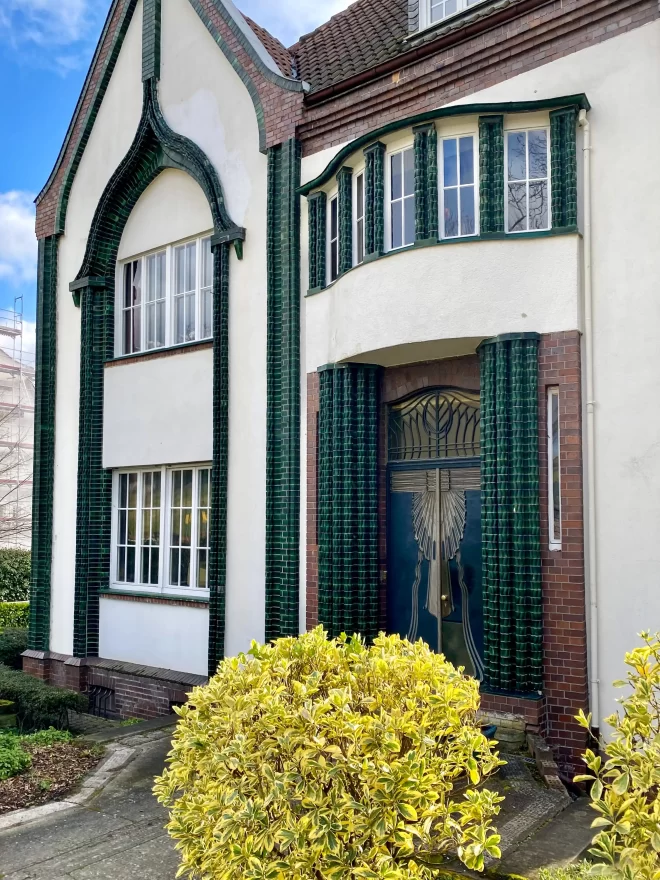 Haus Behrens, 1900-1901. Architekt: Peter Behrens. Foto: Daniela Christmann
Haus Behrens, 1900-1901. Architekt: Peter Behrens. Foto: Daniela Christmann